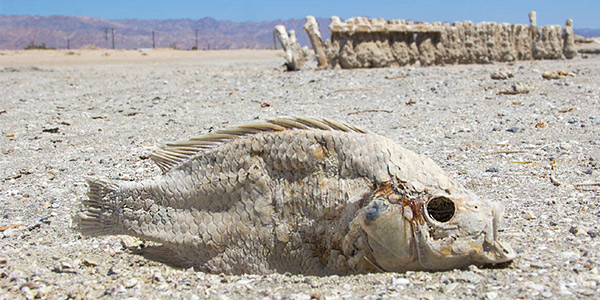A proposal to extract lithium for battery production from geothermal wells in California moved forward Wednesday when the state’s Energy Commission named most of the members of a new blue-ribbon panel to address the plan.
Energy commissioners said the idea of having a “Lithium Valley” in far Southern California could promote the state’s goals of adopting utility-scale battery storage and electric vehicles while reversing the fortunes of the imperiled Salton Sea and its surrounding communities.
Created by a state statute earlier this year, the Blue Ribbon Commission on Lithium Extraction in California, commonly called the Lithium Valley Commission, is intended to foster that plan.
“I am really excited about this,” CEC Commissioner Karen Douglas said. “We have a real opportunity to put Lithium Valley … on the map in a way that also supports local economic development and is the most environmentally positive way of getting bulk amounts of lithium … that I know of.”
Most lithium for lithium-ion batteries comes from South America, Australia and China. Hard-rock mining, which pollutes water, and evaporation ponds, which are depleting the scarce supply of water in Chile’s Atacama Desert, are the main methods of obtaining lithium today.
The Salton Sea, a vast lake created accidentally in 1905 by a levee breach, is drying up and becoming more saline. Rotting fish carcasses line its shores. Dust storms blow toxins from a century of agricultural runoff. Imperial County, which encompasses the proposed area of lithium development, is among the state’s poorest regions.
Geothermal energy is abundant, however, and the existing generating stations and surrounding areas are potential sources of lithium. Geothermal brine — subterranean waters awash in minerals and naturally heated to 500 degrees Fahrenheit — contain huge amounts of lithium. The problem is extracting it in bulk at competitive prices.
“It’s not alchemy,” said Jonathan Weisgall, a new blue-ribbon panel member and vice president of legislative and regulatory affairs at Berkshire Hathaway Energy, which hopes to be a major player in the field. “The lithium is there. We’ve recovered it in the laboratory. The question is, can it be done in a commercial way? That’s what this commission needs to promote to get California on the global map for lithium production.”
Efforts to extract lithium have sputtered and died before, but a bill enacted this year, AB 1657, established the Lithium Valley Commission to explore the possibilities and report to the state by October 2022. The 14-person commission — nine of whom are CEC-appointed members — consists of representatives from lithium extraction firms, EV makers, local tribes, utilities and environmental groups. Five other members are appointed by the California Public Utilities Commission, the governor, lawmakers and the secretary of the state’s Natural Resources Agency.
“The Lithium Valley Commission is charged with reviewing, investigating and analyzing certain issues and potential incentives regarding lithium extraction and use in California, and to consult, when feasible, with the United States Environmental Protection Agency and the United States Department of Energy in performing these tasks,” the CEC said in its background memorandum.
Gov. Gavin Newsom’s order for all new cars sold in California to be zero-emission vehicles by 2035 is expected to give the EV market a huge boost, while the state’s mandate to rely on 100% clean energy by 2045 will require thousands of megawatts of batteries to store solar and wind energy for later use.
The CEC devoted $14 million earlier this year to lithium extraction innovation projects, Chair David Hochschild noted.
The new commission “dovetails beautifully with what’s happening in the energy storage and electric vehicle markets,” Hochschild said. “We are going to see a tenfold increase in the amount of energy storage coming online in California in the next year and electric vehicles, of course. Everyone is seeing what’s going on. … There’s just incredible momentum, and so demand for lithium is going to grow at a healthy clip.”


